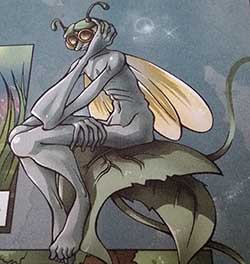pedir mais?
Quando se tem uma Carla como a minha o que se pode pedir mais?!!
Mais dois livros da colecção Bonelli.
Quando se tem uma Carla como a minha o que se pode pedir mais?!!
Mais dois livros da colecção Bonelli.
‘Honey bee do you want make love?’
‘Hell NO! I don’t want to spend more time around the stove.’
‘Ah! What! So…’
‘I want sex, wild sex…’
Entre muitas outras leituras fui lendo calmamente esta obra.
…
Antes de mais, 4 3 2 1, é um livro pesadão de 872 páginas, mas que se lê bem; muito bem até.
Archie Ferguson, a personagem principal, tem a sua vida desdobrada em quatro caminhos. São, assim, apresentadas quatro vidas de Archie, temperadas com sexo, solidão, amor(es), tristeza, alegria, que divergem umas das outras devido a pequenos acontecimentos e escolhas. Mas logo se percebe que as pequenas escolhas se transformam em grandes mudanças.
Para ajudar na distinção da vida dos quatro Archie os capítulos são numerados da seguinte forma:
Archie I
1.1, 2.1, 3.1, 4.1, 5.1, 6.1, 7.1 – Fica-se a saber que Archie morre num incêndio em Rochester enquanto dormia.
Achie II
1.2, 2.2 – Archie morre com o impacto de um ramo na sua cabeça.
Archie III
1.3, 2.3, 3.3, 4.3, 5.3, 6.3 – Archie morre atropelado em Londres.
Archie IV
1.4, 2.4, 3.4, 4.4, 5.4, 6.4, 7.4 – e aqui tudo fica explicado ou talvez não…
Assim 4 3 2 1 é, naturalmente, a contagem decrescente para a morte de Archibald Isaac Ferguson (Archie Ferguson).
E descobre-se que o livro tem vários livros dentro de si. Não é apenas quatro em um, mas acima de tudo um em quatro.
É uma obra de grande fôlego. Narra, não apenas as vidas dos Archie, mas consegue envolver-se perfeitamente nas convulsões sociais dos EUA: a contracultura, o movimento dos direitos civis, o Black Power, a guerra do Vietname, e os movimentos pró e contra, a importância do SDS, a ocupação da Universidade Columbia, em Nova York por estudantes, a revolta em Newark, Nova Jersey, o assassinato de Martin Luther King e a onda de violência que se seguiu.
4 3 2 1 fala de filmes e de livros com uma paixão desmedida, ah! e também de música. Uma maravilha.
É um livro que merece ser lido com calma.
Rabisco inspirado no poema “1000 estrelas“.
Nada de especialmente especial.
Rabisco inspirado no poema “não adoro que ele entre em mim“.
Nada de especialmente especial.

here I am
I usually read accompanied by the sound of good music. I almost always choose between a touch of jazz by the master Chet Baker or I lazily listen to the Stabat Mater of Dvořák. After all they are the CDs that are almost stapled to my old CD player. These musical choices did not work with Blue Sparkles by Sissy Pantelis. So, I read the book without sound and then in the second passage through the final lap – kaaapooooom, I chose Wrath of the Lich King (OST) for a new reading – magic!
… odd thoughts …
Blue Sparkles is a musical book. Mysterious. A kaleidoscope of text, image and sound. Venetian masks, apple, shoe, Hansel, snow, red hood, crows – explosion. TAM. TAM. TAM.
If I already loved Sissy, the inclusion of crows was a tasty “Nevermooorrre” that made me smile with my mouth open. Dear Poe.
TAM. TAM. TAM. And the drums come to life and set the pace. TAM. TAM. TAM, in the background. Here I go to the end of a love story … Will a good story have an unfortunate end? End. Beginning. Perfidia. Mistake. Con. End of the nightmare, perhaps? Intermezzo and opening of a new chapter with a rainbow that reminds me of the Bifrost bridge, but without the presence of the mighty Heimdall.
TAM. TAM. TAM. Books inside a book and we have a wonderful library, naturally full with books, but equally filled with the tree of knowledge and a cat and a rabbit, too – Alice where are you?
A book that I read quickly, but that should be slowly tasted as a dream of a summer night, right brother Oberon?
Here are my loose and incoherent thoughts. I can do much more with a story full of changes, turns, with the introduction of details and more details and more characters around the corner.
Blue Sparkles with texts by Sissy Pantelis and drawings by Vurore is a mesmerizing book. As hypnotizing as that brown butterfly that flies through the book spying the unfolding of the story
“Are beauty and love not the most powerful magic?” – yes and also good books.
A versão de lol para uma história de amor indiano ou talvez não.
Para já sem palavras, sem história.
‘Love me.’
‘Sorry, I don’t want to miss the train.’
Esta história de 10 palavras foi submetida e aceite para publicação.
Just knowing Teri Lee Kline by what she writes is easy to see that she’s full of vitality, humanity and with a heart of an intoxicating sweetness. She is also a writer that can, easily, dazzled me. See, for instance, the work “Snakes At His Feet”.
A while ago I did a little acrostic with the word Teri, and here it is:
Today we
embrace with
rejoicing the
illuminated presence of Teri Lee Kline.
My writing is intensely personal. I try to go directly to the heart of the matter. This is especially important, for obvious reasons, in very short fiction. This does hold true for me, however, regardless of the form I am utilizing. My longer fiction, creative non-fiction, journalistic pieces and even the interviews I conduct have this as the hallmark, as well. My heart is forever on my sleeve for all to see.
2. What books have most influenced your life?When, in my youth, I read To Kill a Mockingbird and The Grapes of Wrath I was unalterably set on a course to view the world in a certain way. They were monumental books for my education and evolving character. Then, as a teenager, reading To The Lighthouse, Mrs. Dalloway, The Waves, A Room of One’s Own, I was blown away with the possibilities in language, words, and literature. It was after reading these Virginia Woolf classics that I began my lifelong love affair with reading and writing. Lastly, James Agee’s A Death in the Family, my favorite novel, taught me about writing from the truest depth of my heart, how to evoke mood, and power. Phenomenal book.
3. If you had to choose, which writer would you consider a mentor?I consider teachers, more than other writers, my mentors. I had a teacher in my youth, Mrs. Delphine Johnson, who recognized in me an innate talent for expressing myself through the written word. She was the first to identify this and encouraged me throughout my school years. My English professor at the University of Minnesota worked endlessly with me and was at my side when I won the Best Freshman Writer scholarship that year. I will never forget these teachers. Of late, a dear friend, Jason Rolfe, encouraged me to submit my work for publication. He is a wonderful writer, mentor and mensch! I am forever indebted to him.
4. What are your current projects?I always have several projects brewing at any given moment. Presently, I am collecting my very short fiction pieces and will begin the process of looking for a publisher. I am also at work on a book length project about very small towns of the world. I also love conducting interviews and doing profiles of writers and artists. I usually have one of those in the works. I would love to start my own journal of food related fiction, non-fiction, poetry, and photography. I’m working towards that goal, as well.
5. How much research do you do?It depends on the project, but I normally choose projects that do not require much research.
6. Do you write full-time or part-time?I write as often as I can. My notebook is ever ready.
7. Where do your ideas come from?My ideas come from many places: my observations of people, from observing nature, from my dreams, from stories in the news. Most often my best ideas come to me when I am in that blessed and magical state between wakefulness and sleep. It is usually in moments of silence that my muse speaks.
8. How can readers discover more about you and you work?I have found Facebook and Twitter to be useful tools for connecting with readers and especially with other writers and artists. My posts are generally very personal in nature. People respond well to this and for this I am pleased and grateful. I am quite new to the world of publishing so therefore do not have a long list of credits. I was very happy to be featured on the pages of Literary Orphans multiple times, Sein und Werden and also, the Utter Nonsense issue of the international journal of experimental and absurdist literature and art, The Black Scat Review.
What the Giants Were Saying is accompanied here by the shorter work that inspired it, Red Fire, a piece that pushes the boundaries of extreme horror into a visionary and surreal world of love and pain, great white moths and tattooed skin, and above all, into the world of story itself.
Eibonvale Press
What the Giants Were Saying, with a perfect set up and with a great structure, is a strange story about domination and guilty, about dreams and fear, about pain, about hell and anguish, about refuge: no salvation, no cure. What the Giants Were Saying is a trip in your mind. Is deep, complex and multi-layered. Lots to take in, lots to read again and enjoy.
David Rix takes things to the extreme. It’s delightful how the story constantly establishes new points without ever getting monotonous. It gets hard to believe that the ending will be able to explain everything and I start speculate about that there can only be one possible conclusion for all the events – no conclusion at all.
To me the biggest achievement of the book is, that it’s never creepy just for the sake of freaking the reader out; every line has its purpose. Nonetheless, it is a very disturbing, but also compelling and mesmerized, book.


são regularmente gastos na produção e manutenção deste blog uns bons pedaços de caldo, suaves e frutadas cervejas.
my goal is to keep me satisfied!
porta VIII is my personal site. Grab a beer and sit tight.
Are you comfortable? Take a look around to the new stuff and adventure trough the archives. Cá me podem encontrar a percorrer o mesmo caminho; a arrotar bom dia, boa tarde, boa noite, e por vezes um até já.
